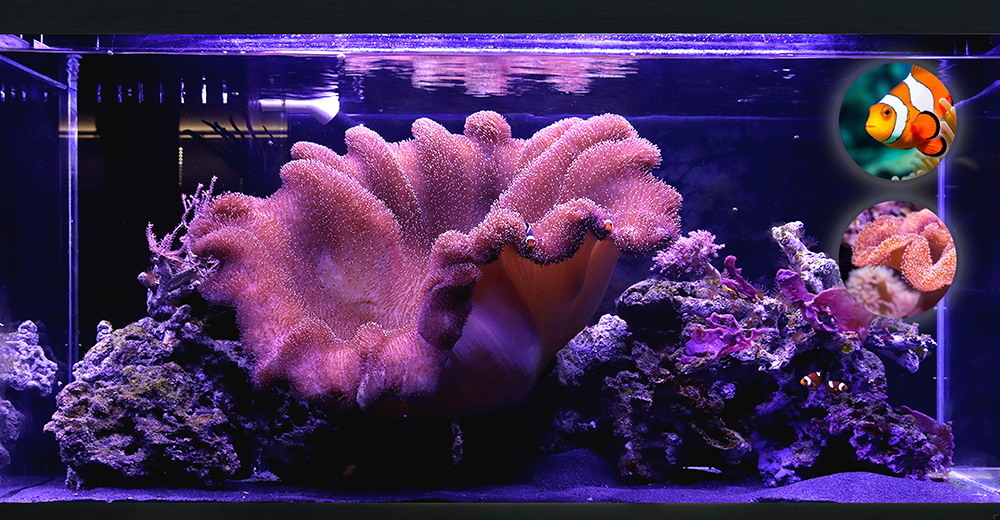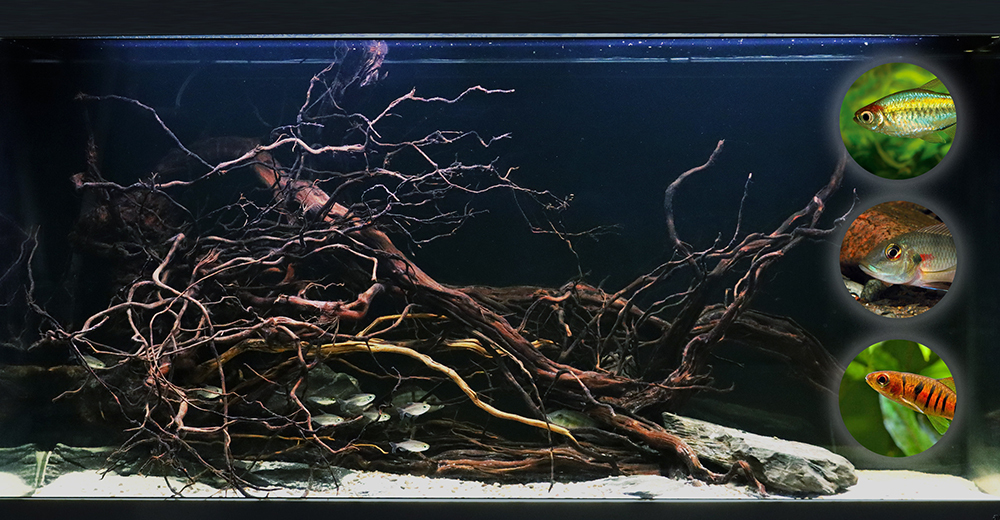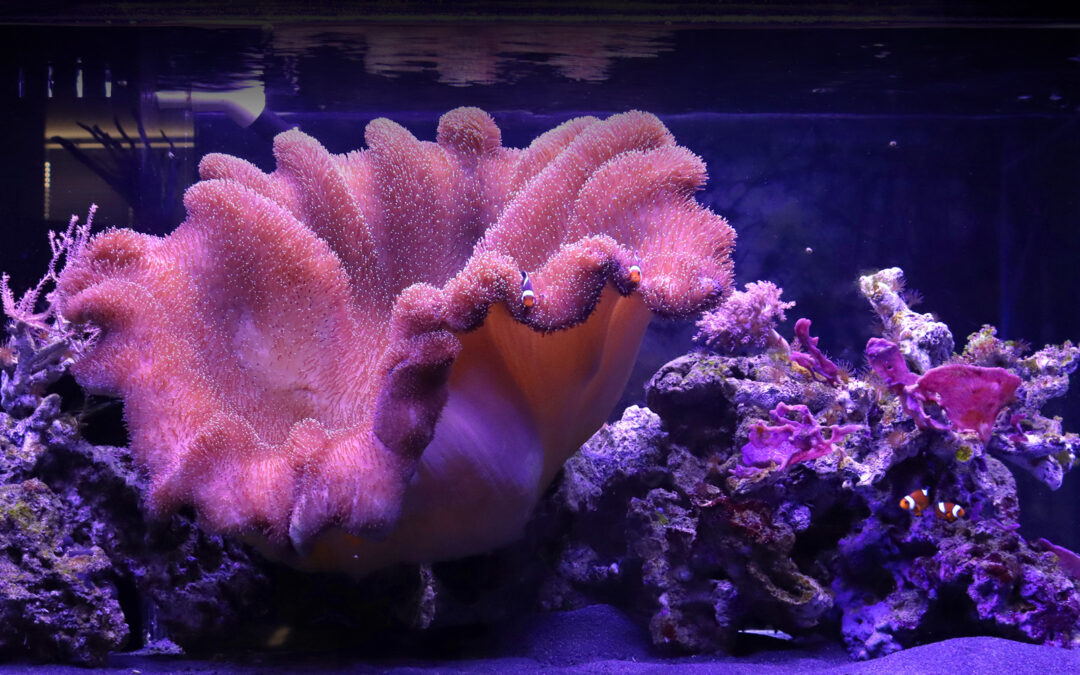September has arrived. This is the best month to set up your new aquarium. Days are getting shorter, the air is cooling, and summer is slowly fading into autumn. Surely, you have spent some days, or even just an afternoon, by the seaside or along the banks of a river. What is better than recreating in your upcoming aquarium a part of what you have seen in those days?
The natural world has consistently stood as the most profound wellspring of inspiration when it comes to crafting a new aquarium. The positioning of submerged rocks and timber is not random; it is meticulously sculpted by the ceaseless influence of waves and currents, much like how sand and gravel gather in particular locations, giving rise to unique formations of colors and shapes.
In this article, we will show you two practical ideas for setting up your next aquarium, drawing inspiration from nature. We will focus on a marine aquarium and a freshwater one.
Marine aquarium setup ideas
The marine aquarium we are setting up is an Amtra Station Tank Reef , measuring 90 cm, pre-equipped with an overflow system, where filtration is entrusted to an Amtra Sump 65x38x38 cm with an electronic DC Sump Pump and Amtra Square Skim protein skimmer. If you want to delve into the technical setup of the tank, you can read the article dedicated to the technical setup of a marine aquarium.
For this tank, we have created an open rock structure that houses some soft corals, illuminated by two Amtra LED System Reef Wi-Fi lights to provide the right light for coral’s growth. The main coral, which will host the group of clownfish, is a large specimen of Sarcophyton.
Clownfish are famous for their social behavior and in nature they primarily live near anemones but can also form symbiotic relationships with other invertebrates like the Sarcophyton coral.
These fish live in social groups from which a dominant pair will be selected. They are protandrous hermaphrodites, meaning they are all born as males, and the dominant individual in the group will change sex to become female. If the size of the coral allows it, the pair can coexist with up to four subordinates.

Come set up a freshwater aquarium
Regarding the freshwater tank, we chose to create a biotope from West Africa dedicated to breeding the cichlid Chromidotilapia guntheri.
The selected tank is the Amtra Alux LED Combi model, where we recreated its preferred environment: the riverbank. In nature, this fish lives in slow-flowing parts of rivers, seeking shelter among rocks and submerged plant roots growing along the banks. To recreate this condition we chose to use Amtra Legno Dragon Skin (alternatively, Amtra Wood Moorwood, Amtra Legno Red Spider King) for the wood elements and Amtra Quarz Solid Black Stone for the rocks.
For what concerns their diet, these fish sift through the bottom sand for food. Therefore, we opted for a mix of Ivory White Quartz (fine and extra fine) and Amtra Polichrome Gravel Medium substrate to observe the fish feed as they would in nature.
To create a comfortable environment for the cichlids, we decided to introduce two species of schooling fish: the alestid Phenacogrammus interruptus and the cyprinid Enteromius fasciolatus. In Africa they live alongside alestids (relatives of South American characins) and various cyprinid families, as we can find in Europe and Asia.
It is important to include these fish in a tank dedicated to the breeding of African or South American riverine cichlids, because it prevents territorial disputes within the cichlid pair and serves as a dither element to coax out the shyer fish. The presence of mid-water fish indicates to the cichlids the absence of predators.
Another reassuring element that recreates the natural environment is the color of the water. In many areas where Chromidotilapia guntheri resides, there are significant tannin levels in the water, which shield the light and give it an amber hue. To recreate this effect, we used Amtra Pro Nature Plus, a water conditioner we discussed HERE.

ABOUT THE AUTHOR

Lorenzo Tarocchi
Laurea Magistrale in Agriculture, Master degree in Aquaculture and Ichthiopathology.
Born in 1986, Laurea Magistrale in Agriculture, Master degree in Aquaculture and Ichthiopathology. Passionate about fishing and everything that lives underwater, he began working in an Aquarium shop in 2010 and over the years in one of the major Italian ornamental fish facilities, in the meantime collaborating with the Natural History Museum of the University of Pisa and with some important companies of the sector.



